
Eustathius of Antioch, sometimes surnamed the Great, was a Christian bishop and archbishop of Antioch in the 4th century. His feast day in the Eastern Orthodox Church is February 21.

Gerald of Mayo is a saint of the Roman Catholic Church and Eastern Orthodox Church. Born in Northumbria, the son of an Anglo-Saxon king, he was one of the English monks at Lindisfarne who accompanied Colmán of Lindisfarne to Iona and then to Ireland. This occurred after the Synod of Whitby 664AD which decided against the Irish method of calculating the date for Easter. Colman was an ardent supporter of the Irish traditions; after the synod decided to adopt the Roman computation.

Prisca was a young Roman woman allegedly tortured and executed for her Christian faith. The dates of her birth and death are unknown. She is revered as a saint and martyr in Eastern Orthodoxy, by the Catholic Church, and in the Anglican Communion.
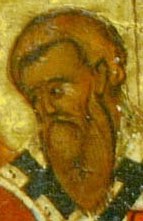
Pudens was an early Christian saint and martyr.
Auxentius of Mopsuestia was bishop of Mopsuestia and a saint in the Eastern Orthodox and Roman Catholic churches. His feast day is December 18. Baronius places Auxentius in the Roman Martyrology, because of the story told by Philostorgius that he was at one time an officer in the army of Licinius, and gave up his commission rather than obey the imperial command to lay a bunch of grapes at the feet of a statue of Bacchus. Tillemont is inclined to believe that Auxentius was an Arian; his patronage of the heretic Aetius, points to this conclusion.

Manahen was a teacher in the first century Christian Church at Antioch who had been 'brought up' with Herod Antipas.
Rigobert was a Benedictine monk and later abbot of the Abbaye Saint-Pierre d'Orbais who subsequently succeeded Saint Rieul as bishop of Reims in 698. He is venerated as a saint in the Catholic Church.
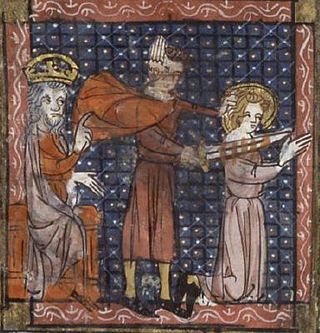
Saint Gordianus was a Roman martyr who was killed during the reign of Julian the Apostate, and is commemorated on 10 May.
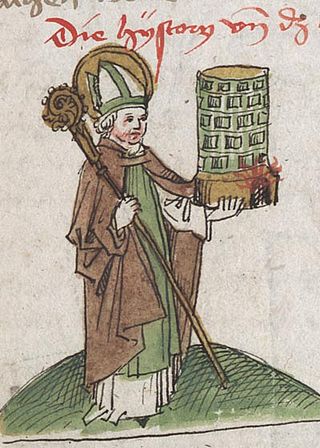
Epimachus of Alexandria was a Roman martyr who died in 250 during the Decian persecution. He and his companions—Alexander, Ammonarion, Mercuria, Dionysia and other women—were beheaded at Alexandria. They are commemorated on 12 December.
Nicomedes was a martyr of unknown era, whose feast is observed 15 September. He was buried in a catacomb on the Via Nomentana near the gate of that name.
Andrew the Scot was the Irish-born student and assistant of St. Donatus. He served as archdeacon of Fiesole under Bishop Donatus.

James O'Connor, S.J. was the first Catholic Bishop of the Diocese of Omaha, Nebraska.
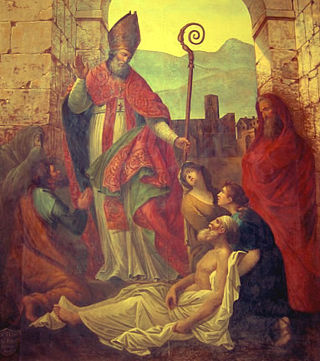
Saint Fulcran was a French saint. He was bishop of Lodève.
Colman mac Cathbaid is a sixth-century Irish saint who was an abbot and bishop of Kilroot, a minor see which was afterwards incorporated in the Diocese of Connor. He may have given his name to Kilmackevat.

Winibald was abbot of the Benedictine double monastery of Heidenheim am Hahnenkamm. Traditionally, he is called the brother of Willibald and Walpurga.
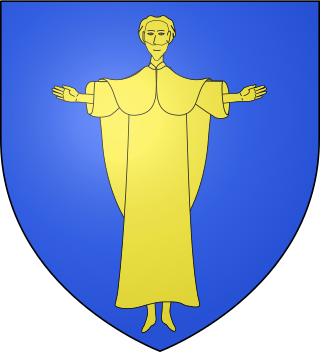
Andeolus or Andéol is an alleged Christian missionary martyred in Gaul.
Saint Nazarius was the fourteenth abbot of the monastery of Lérins, probably during the reign of the Merovingian Clotaire II (584-629). He successfully attacked the remnants of paganism on the southern coast of France, overthrew a sanctuary of Venus near Cannes, and founded a convent for women on its site, which the Saracens destroyed in the 8th century. His name is inscribed on the calendar of saints of the French Church, on 18 November.
Jacques-Maurice des Landes d’Aussac de Saint Palais was an American prelate of the Roman Catholic Church. He served as the fourth Bishop of Vincennes, from 1848 until his death.
Genesius, Count of Clermont was a noble of Gaul and reputed miracle worker. He was said to be Count of Auvergne. His residence was at Combronde.
Immaculate Heart of Mary Church, is a Catholic parish church in Cleveland, Ohio and part of the Diocese of Cleveland. It is a located on Lansing Ave. near East 66th St., in a part of the South Broadway neighborhood previously known as Warszawa, also referred to today as Slavic Village. Both the church and the area are GNIS named features. The church is in the neighborhood of, but not within, the area listed as Warszawa Neighborhood District on the National Register of Historic Places. The church, school, rectory, and convent buildings are listed together as a Cleveland Designated Landmark.











